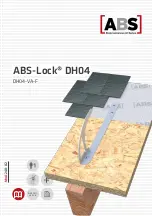
Technical description
GEDA
®
1500 Z/ZP
Operating Manual
20 / 84
BL076 GB Edition 07.2015
3
Technical description
3.1
Description of function
The
GEDA 1500 Z/ZP
is a rack-and-pinion hoist constructed vertically
that, on the one hand, is used as a construction hoist for exclusive use
to transport construction material, on the other hand, used as a
transport platform for the transport of material and up to a max. of
7 persons. The platform can be entered and exited at secure exit points
installed (ground base enclosure and landing-level safety doors).
These operating modes are selected using a key switch on the platform
control.
•
The machine is fitted with an overload device. If the load capacity is
exceeded, this switches off travel movement in both directions and
the overloading control light lights up.
•
The lifting speed of the platform is approx. 12 m/min. or 24 m/min.
respectively.
•
The lowest 2 m are specifically secured.
In this safety area,
−
the lifting speed of the platform is approx. a max. of 12 m/min.
−
travel is only possible using dead man's control.
−
Stops the platform coming from the top. Before starting each time,
a signal is emitted in this area for approx. 3 seconds.
−
Cannot be operated from the landing level control.
•
The platform openings (barrier, door, assembly guard, assembly
frame) are electrically monitored and interrupts the safety circuit on
opening so that the platform immediately stops or does not move off.
−
Access to the platform at the ground station can only be opened
when the platform is located at the ground station.
The downward travel path of the platform is limited by a
DOWN
limit
switch and the upward travel path is limited by an
UP
limit switch. If
there is movement beyond the limit switch, the
EMERGENCY STOP
limit switch interrupts the
EMERGENCY STOP
safety circuit.
Further travel is possible in both directions from the landing-level limit
switch.
•
The base unit can be extended by up to a construction height of
100 m.
•
Installation of the hoist includes safety equipment for the loading and
unloading points (refer to the assembly instructions).
















































